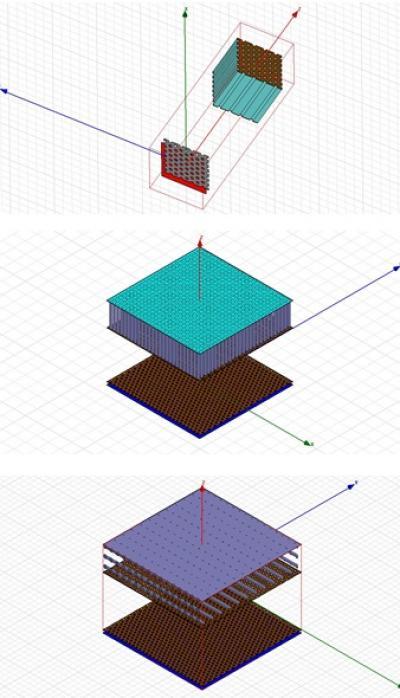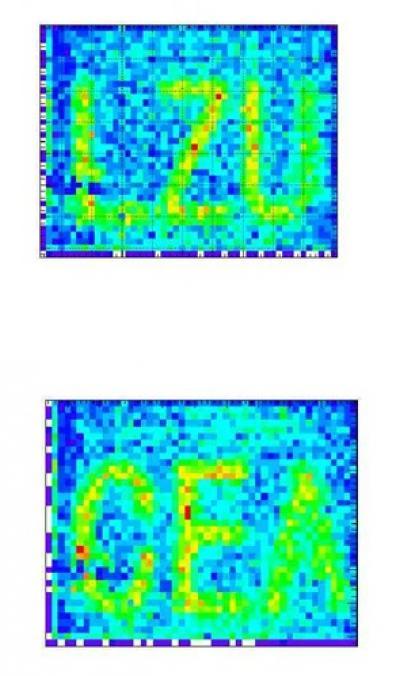To increase the neutron detection efficiency of Bulk-Micromegas (MICRO-MEsh GAseous Structure) neutron detectors, researchers from Lanzhou University (China), IRFU-CEA (France), and the University of Tennesse-Knoxville (USA) have proposed three novel converters (Fig. 1). When validated using Monte Carlo simulations, the design shown in Fig.1 C results in a threefold increase in neutron detection efficiencies. This work is described in detail in SCI CHINA: Tech. Sci. 2013, 43(3).
The team have now made a Bulk-Micromegas based neutron imaging detector with a traditional thin-film neutron convertor. The dimensions of the detector's sensitive area is 57.4 mm × 88.6 mm, which is composed of 1,728 rectangular pads (36 pads in the X direction and 48 pads in the Y direction). Each pad has an area of 1.50 mm × 1.75 mm (http://mpgd.lzu.edu.cn/research.html). Although the detector has a relatively low neutron detection efficiency, very good mask images are obtained (Fig. 2). Without any modification, the detector can be used as a 2D neutron beam monitor for projects that require low detection efficiency (detectors with high detection efficiency cannot operate with high intensity neutron beams). At the IEEE Nuclear Science Symposium and Medical Imaging Conference, CA, USA (2012), Dr. Xiaodong Zhang presented this work on behalf of the FNI collaboration.

This shows; A) Micro-channel plateB) Parallel micro-pillar 2D arrayC) Oblique micro-pillar 2D array.
(Photo Credit: ©Science China Press)
The team is currently collaborating with companies to make detectors using micro-machining and new printed circuit board techniques.
Additionally, the novel detectors can be used to improve thermal neutron, cold neutron and ultra-cold neutron efficiencies, through simply changing the detection conversion material from polyethylene to boron-10, or lithium-7. Dr. Zhang is optimistic about the impact of these detectors in different research fields: "By choosing different conversion materials I envisage that at least a 10% detection efficiency can be achieved for thermal neutron detection. Our detectors can be used to replace the current neutron detectors which use helium-3, and hence reduce the demand for helium-3." Currently, his team is developing this technique at Spalation Neutron Source in Oak Ridge National Laboratory, USA.

These are images of boron-loaded polyethylene masks: LZU and CEA with Am-Be neutrons.
(Photo Credit: ©Science China Press)
Source: Science China Press